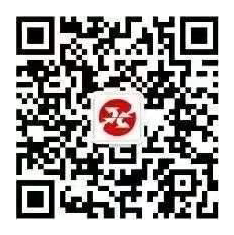Excursion Treasures of bangkok tour at Laem Chabang
Cruise line: SilverseaDifficulty:
Suan Pakkad Palace Museum
Take a 2.5-hour journey into the heart of Bangkok to visit the collection of traditional Thai houses at Suan Pakkad Palace Museum, which was brought by Prince and Princess Chumbhot. Some of the houses belonged to the prince's family and all are more than a century old. In a spirit of sharing, they converted their traditional private residence to a museum which opened in 1952, the first instance of a Thai family doing so. The name Suan Pakkad literally translates to "cabbage patch" as the land was originally used for farming. Today, you will see a well-tended tropical garden with serene ponds surrounding eight traditional Thai houses. Most of the art objects on display in the houses belonged to Prince Chumbhot's ancestors, which include the artifacts from the daily life of royalty, such as food containers decorated with mother-of-pearl and silver, betel nut boxes, clothing and ecclesiastical fans. The displays also include the archaeological finds from Ban Chieng, collections of rocks and minerals, shells, Benjarong pottery and other Thai ceramics.
Lacquer Pavilion
The significant house is the Lacquer Pavilion, which dates to the 17th Century and was originally located at a temple near Ayutthaya. Now fully restored, it's an exquisite example of Thai architecture, with richly carved gilded wood walls and an interior filled with lively Ramayana and Buddha mural paintings drawn in gold on black lacquer.
Lunch and Bangkok City Pillar Shrine
Proceed to the restaurant for lunch then continue your drive to the Bangkok City Pillar Shrine erected by King Rama I the Great upon the establishment of Bangkok as a capital in 1782. Symbolically, the pillar provides stability and prosperity for the city. The erection of the shrine was carried out in accordance with the royal traditions. The pillar was made of cassia wood known as Chaiyaphruek flanked by sandalwood, measuring at the base 11.42 inches in diameter and 187 inches in height. The 79-inch portion of the pillar was buried deep in the ground while the remaining 108-inch portion was above ground. A jewel in the shape of a budding lotus was put on the top of the pillar and covered with lacquer and gold leaf. The city's horoscope was also placed inside the pillar. Later, King Rama IV made some amendments to the city's horoscope. He ordered that the horoscope be written on a 15 gram gold sheet and that a new shrine with a Prang-shaped spire be built. The new horoscope was then put inside the pillar.
Tuk Tuk Ride and Wat Ratchanadda Royal Temple
Afterwards, enjoy trekking through Bangkok old city via our typical taxi, an open motor tricycle called a Tuk Tuk. Then stop to visit Wat Ratchanadda, a royal temple best known for the Loha Prasart or Metal Castle which was built in 1846 on request of King Rama III and inspired by two other similar temples found in India and Sri Lanka. Loha Prasat is a 36 m high construction supporting 37 metal spires representing the 37 virtues toward enlightenment. The main chapel of the temple also houses a beautiful golden Buddha image with wonderful murals, paintings and door carvings. You could also explore a small cluster of vendors selling protective amulets, khon masks and images of Buddha, Hindu deities and revered Thai monks.
King Rama III Memorial Park
Before re-boarding your coach for the return trip, don't miss an opportunity to take photos in the King Rama III Memorial Park with the Maha Jessadabodin Courtyard Pavilion, one of the ideal Bangkok viewpoints and landmarks.
Points of interests
Points of interest seen on this excursion may include: Bangkok, Collection of Traditional Thai Houses Suan Pakkad Palace Museum, Bangkok City Pillar Shrine, Wat Ratchanadda, Loha Prasart, King Rama III, Memorial Park with Maha Jessadabodin Courtyard Pavilion, Tuk Tuk Ride in Bangkok Old City, Lunch
Note
Please note: This tour involves a moderate amount of walking of approximately 0.6 miles or 900 metres with some steps to negotiate at the sites and a few to get on/off the coach and the local tuk tuk. It is suitable for guests with limited mobility but not those who utilise a wheelchair. Lightweight comfortable clothing, and flat closed-toe walking shoes are recommended. The order of the visits can vary.

